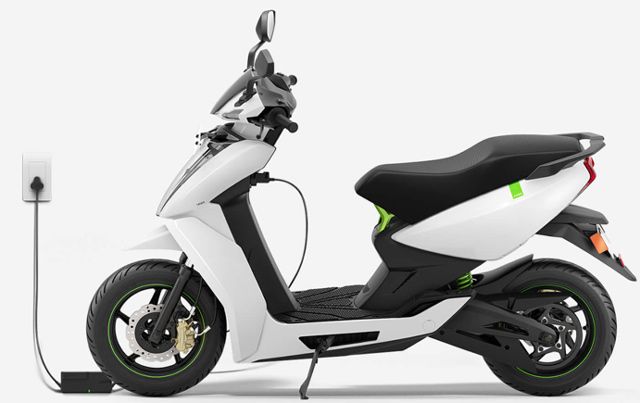Asia Pacific Business Jet Market size was USD 1.62 billion in 2023 and the market is projected to touch USD 5.35 billion by 2032, at a CAGR of 15.49% during the forecast period. The rapid economic expansion of the Asia-Pacific area over the past few decades has led to an increase in the number of high-net-worth individuals (HNWIs) and ultra-high-net-worth individuals (UHNWIs). The demand for upscale goods and services, including business jets, has expanded because to people’s growing wealth. Rich people and corporate executives greatly benefit from the unparalleled comfort, privacy, and time efficiency that business jets offer. Business jet sales are expected to grow in tandem with the region’s economies as they continue to expand and generate a growing number of affluent individuals. Large and quickly growing economies like those of China, India, and Indonesia constitute particularly significant markets for business jet makers. Since the Asia-Pacific business jet market has room to grow, there are a lot of obstacles in its way. One significant barrier in the field is the multitude of regulatory regimes. Because of differing national legislation and certification processes, business jet operators may encounter greater operational difficulties. Managing multiple regulatory frameworks could be necessary, which would increase costs and require more administrative labor.
The COVID-19 epidemic affected the market for and use of business jets because it restricted travel and caused a decline in local economic activity. Following the pandemic, there was a strong economic rebound, which in turn encouraged the demand for private aircraft, especially in Southeast Asia, as travel restrictions were lifted. The expansion in foreign investments, especially in Malaysia, Singapore, Thailand, and Cambodia, increased demand for private charters. Business jet OEMs are primarily focused on the region, where they expect a sizable customer base to drive a considerable demand for new business jets over the next 10 years.
Asia Pacific Business Jet report scope and segmentation.
Asia Pacific Business Jet dynamics
The factors influencing the dynamics of the Asia Pacific Business Jet Market include regulatory mandates, technological advancements, and increasing industrial safety awareness. It is expected that demand for new airports in strategic cities will rise as air travel continues to rise in both developed and emerging nations. This is a result of people’s improved purchasing power and overall net value in a post-pandemic world. People’s net worth is rising as a result of the economy gradually improving and getting closer to pre-pandemic levels, which is driving up demand for business aircraft.
Asia Pacific Business Jet drivers
Expansion of Business and Trade Activities
The Asia-Pacific area is a center for global trade and business, with numerous multinational companies setting up or growing their operations there. Business executives benefit from a strategic advantage that comes with business jets since they can travel between places swiftly and efficiently, which makes meetings, partnerships, and negotiations easier. Being able to avoid congested airports and commercial airline timetables improves efficiency and permits more flexible travel arrangements. The need for business jets for corporate travel and business operations is expected to rise as multinational firms expand their operations in Asia-Pacific, which will fuel market expansion.
Inadequate Commercial Aviation Infrastructure
The infrastructure supporting commercial aviation is either inadequate or overwhelmed in many regions of the Asia-Pacific area as a result of the constantly increasing passenger volume. For business travelers, travelling by commercial aircraft can be cumbersome and time-consuming due to crowded airports, restricted flight connectivity to remote places, and protracted security processes. A solution is provided by business jets, which give direct access to a wider variety of airports, such as private and smaller regional airports not served by commercial airlines. Because of their versatility, business jets are a desirable means of efficient and economical regional travel, enabling users to reach locations that would otherwise be challenging or time-consuming to reach.
- Restraints:
High Operational and Maintenance Costs
The high cost of ownership and upkeep associated with business jets may deter some prospective purchasers. Fuel, crew pay, hangar fees, insurance, and routine maintenance can all come at a high cost. These expenses may be increased in the Asia-Pacific area by variables including the scarcity of specialized repair facilities, the high import duties on aviation parts, and the disparities in national regulations. These costs make owning a business aircraft an expensive undertaking, which may discourage people and companies from investing in or using business jets. Because of this, the market’s potential expansion may be constrained by the high operating and maintenance costs, particularly among smaller companies and less well-off individuals who may otherwise be interested in using this kind of transportation.
Stringent Regulatory Environment and Airspace Restrictions
In the Asia-Pacific area, corporate aviation regulations can be complicated and onerous. Regulations pertaining to business jet operation, registration, and taxation differ throughout nations. Operators may experience delays and increased compliance costs as a result of the complexity and time required to navigate these restrictions. Furthermore, limitations on airspace and the scarcity of business aviation facilities, such runways and terminals, might make it more difficult for business aircraft to operate without incident. Because of the strict airspace control laws in some of the region, corporate jets find it challenging to book flights or get into particular airports. These operational and regulatory obstacles may pose serious obstacles to the growth and expansion of the business jet sector in the area.
- Opportunities:
Advancements in Technology and Sustainable Aviation
The market for business jets in the Asia-Pacific region is expected to grow significantly because of advancements in technology and the need for ecologically friendly aviation solutions. Due to developments in power technology, material science, and aircraft design, business jets are becoming more eco-friendly, quiet, and efficient. For example, the use of electric and hybrid-electric propulsion systems, which have the potential to significantly reduce carbon emissions and operating costs, might make business jet travel more ecologically responsible and appealing to clients who care about the environment. Developments in avionics, networking, & in-flight entertainment systems improve the whole passenger experience, increasing the appeal of business jets as a luxurious and convenient choice. By providing funds for the development of advanced, environmentally friendly aircraft, business jet producers may be able to attract a new market of buyers who are concerned about the environment and contribute to global sustainability goals.
- Segment Overview
By Body Type, The Asia Pacific Business Jet Market is segmented Large Jet, Light Jet, Mid-Size Jet. Private aircraft intended to transport small groups of people are called business jets. Business jets in the Asia-Pacific region made up 6% of the active worldwide fleet as of July 2022. Of these, the large jet category held a significant market share of 52%, with light jets coming in second with 22% and mid-size aircraft with 17%. Since many business jets are used for charter, private, or corporate purposes, the large jet category is dominant. The primary reason these aircraft are valued by the majority of users UHNWIs is their efficiency, technology, large cabin, and range. With 21 planes, Cessna, a Textron Inc. affiliate, was the main OEM for light jet deliveries during the research period. With six aircraft, Bombardier was the leading OEM in the mid-size market, followed by Gulfstream Aerospace Corporation, a General Dynamics wholly-owned subsidiary. With 97 aircraft, Gulfstream Aerospace Corporation is a leading OEM in the big jet market. Bombardier comes in second with 45 aircraft.60% of all new business jet deliveries between 2019 and 2023 will come from three manufacturers: Gulfstream Aerospace Corporation, Bombardier, and Cessna. These three companies dominate the business jet market. Ninety-eight percent of the business jets in operation throughout Asia-Pacific are fully owned, with the rest aircraft being owned in shares and fractions.
By Business Model, The Asia Pacific Business Jet Market is segmented into On-demand Service, Ownership. The on-demand service concept allows customers to charter a business aircraft when needed without entering into a long-term contract. This is the ideal strategy for individuals or groups that require flexibility but don’t frequently require access to a jet. In order to suit their specific travel requirements, customers can choose from a variety of aircraft sizes and types and make last-minute flight reservations. It’s an affordable option for infrequent visitors because there are no long-term obligations or continuous ownership expenditures.
Asia Pacific Business Jet Overview by Region
The Asia-Pacific business jet market has notable geographical variation, mostly due to disparities in economic situations, infrastructure advancements, and levels of commercial activity across the various nations. The country’s developing economy and rising number of affluent individuals are driving the market’s rapid growth in China. India’s business jet industry is expanding rapidly as well, mostly due to the country’s expanding corporate sector and growing economy. The demand for private jet travel is concentrated in places like Bangalore, Delhi, & Mumbai, as an increasing number of businesses and entrepreneurs seek out the efficiency & flexibility that private jet travel provides. In 2022, Japan’s growth rate was 15%. The Asia-Pacific region’s total wealth growth has been impacted by the major countries’ sluggish increase in the HNWI population. In China, the number of millionaires increased by more than 70% while average wealth increased. Asia-Pacific is becoming the world’s most popular location for wealth management & private banking due to the region’s growing wealth, rising HNWI population, and growing demand for financial guidance.
Asia Pacific Business Jet Market competitive landscape
Leading companies such as Bombardier Inc., Dassault Aviation, Honda Motor Co., Ltd., Textron Inc., The Boeing Company, United Aircraft Corporation, and Berry Global Inc..The Asia-Pacific business jet industry is highly competitive, with a variety of regional firms scheming to gain market share through differing tactics. To meet the sophisticated needs of the region’s corporate and high-net-worth clientele, these businesses make significant investments in R&D to innovate and improve their product offerings. A variety of business formats, such as jet cards, on-demand charters, and fractional ownership, are available from them, offering economical and flexible alternatives. To get an advantage over their competitors, these operators frequently take advantage of their in-depth knowledge of regional markets and legal frameworks.
Scope of Asia Pacific Business Jet report
In case you don’t find what, you are looking for, please get in touch with our custom research team at
https://organicmarketresearch.com/press-release/saudi-arabia-influenza-vaccine-market
https://organicmarketresearch.com/press-release/saudi-arabia-smart-meters-market
https://organicmarketresearch.com/press-release/saudi-arabia-in-vitro-diagnostics-market
https://organicmarketresearch.com/press-release/uae-green-energy-market
Contact Us
+91 9319642100
sales@organicmarketresearch.com
Noida One Tower Sec 62 Noida 201301
Website: https://organicmarketresearch.com













